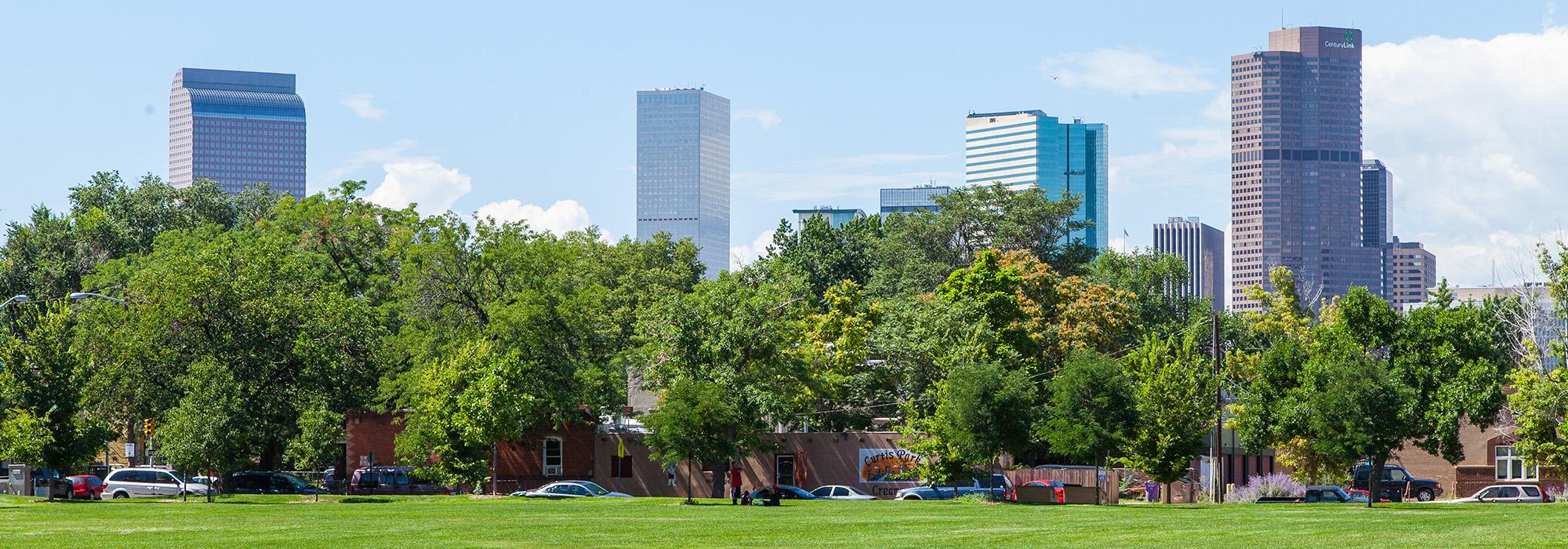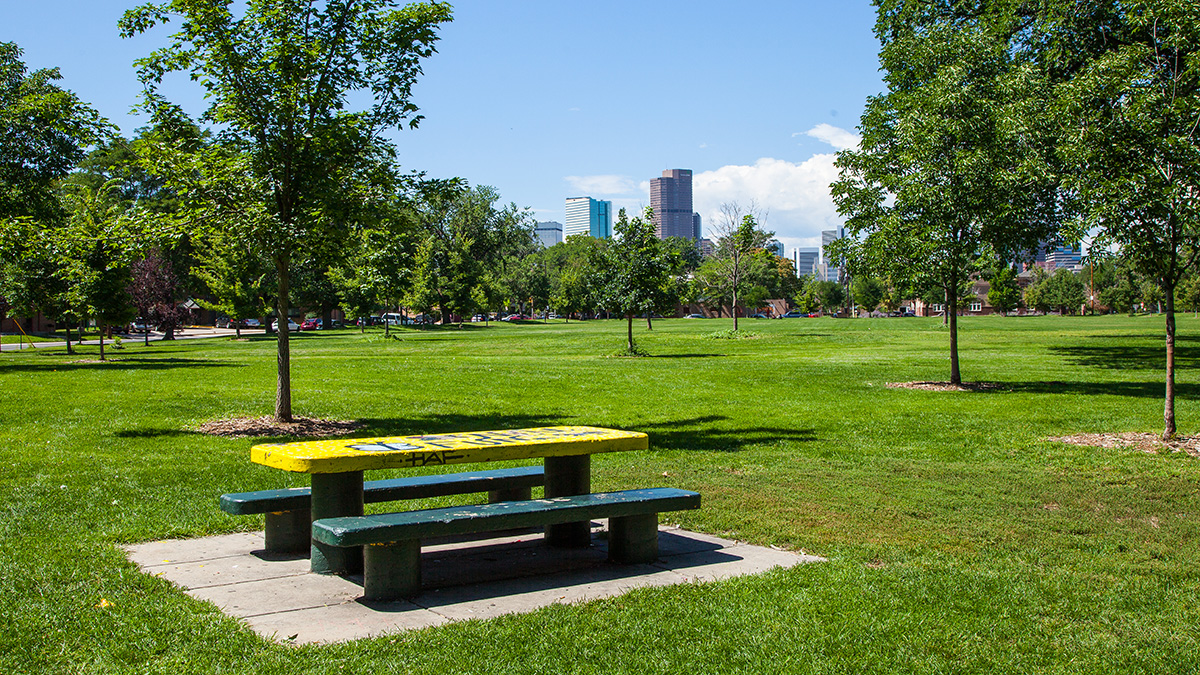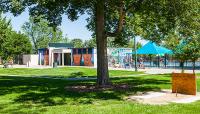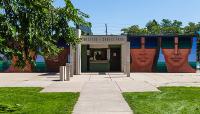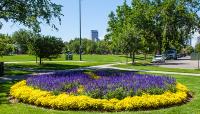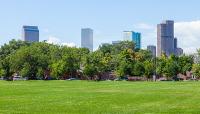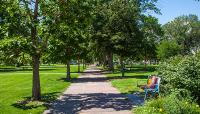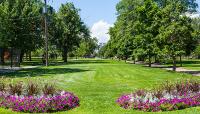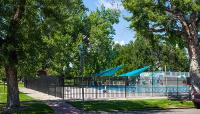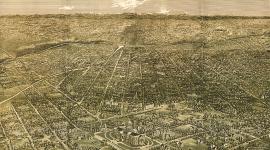Landscape Information
This nine-acre park, the oldest in the city, is named for Samuel Curtis, one of Denver’s founding fathers. In 1868 Francis Case and Frederick Ebert donated a lot on Curtis Street for park use in the nascent Curtis Park streetcar suburb. In 1874, cottonwood trees were planted and an fence enclosure erected. Following this initial development, a playground was built in 1905, and in 1914 a comfort station constructed. A year later, two additional blocks on the opposite side of Curtis Street were added, separated from one another by 31st Street. Play facilities were relocated to the northern block and augmented with a bathhouse and tennis court, while the southern block remained open. Earlier, in 1913, Olmsted Brothers developed a planting plan for the original parcel. By 1935, a modified version of this plan was realized, comprising a cross-axial network of straight and arcing red sandstone walks, open lawns, garden beds, and canopy trees. In 1936 a pool was built in the playground block and in the 1950s, walks, gardens, and several trees in the original parcel were removed, and replaced by straight paths and an open lawn. Tennis courts were introduced in the playground section and 31st Street was permanently closed, uniting the newer parcels.
After nearly a century of incremental improvements, during the latter twentieth century the park’s condition declined prompting various revitalization efforts. In the 1970s and 1980s the local Chicano population commissioned the Eyes on the Park mural by Denver artist Emanuel Martinez and successfully petitioned to add “Mestizo”, meaning a mixing of ethnicities in Spanish, to the park’s name. The pool and playground were updated, and in 2005 the closing of Curtis Street between 31st and 32nd Streets finally unified all parcels. In 2015, a partnership between community members, the Trust for Public Land, and Denver Parks and Recreation led to the construction of an updated playground area, including a carousel and play structure that honors the thriving African American community that resided in the neighborhood in the first half of the twentieth century. The park is a contributing property of the Curtis Park Historic District, listed in the National Register of Historic Places in 1975.



